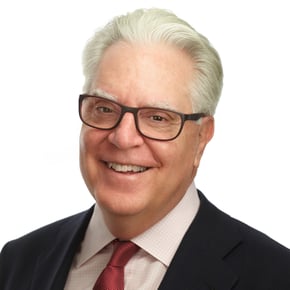Envision a large warehouse filled with inventory, forklifts, and clip-board clad individuals running up and down the aisles. Now imagine that the “inventory” consists of the company’s “transformation initiatives” developed to keep the company on the cutting edge. Which initiatives come off the shelves first? Which ones stay behind for a later date? How do you know they will work in time to beat your competitors?
The answer is, you won’t. Welcome to the “CEO’s Warehouse.”
Back to the Future with Program Management Offices
Today CEOs face a trifecta of a challenge. They must simultaneously run, grow, and transform the company to win in the current marketplace. Many CEOs are responding with Program Management Offices, a 1990s construct for overseeing transformations, coupled with the same vintage process of Continuous Improvement. These models are being resurrected to organize, manage, and track the ever-increasing flow of change initiatives designed to meet their new three-fold challenge.
Are they working? The short answer is no.
What Got Us Here Won’t Get Us There
These two frameworks land flat today because the rate of change 30 years ago was much slower than it is today. CEOs had time to improve their companies’ efficiency and effectiveness incrementally over time.
The risk today is that Program Management Offices turn into “CEO’s Warehouses” filled with transformation initiatives that are often disconnected from value creation.
CEOs and Executive Leadership Teams sit alongside the Program Management Office not directly engaged with their work and its results. Business leaders conduct both their regular jobs and their transformation jobs, distracting them from the true work of value creation.
CEOs need two new transformation routines that are connected to value creation:
- A new construct to replace the Program Management Office
- And a new process to replace Continuous Improvement
A New CEO Playbook for Transformation
Transformation cannot be delegated. CEOs and Executive Leadership Teams must govern their companies’ transformation with a new construct called a “Table”, set up at each value hotspot across the organization.
Around these tables are chairs representing the critical roles required to deliver the value expected, and led by a hotspot owner who is accountable for the outcomes. These tables are “set” by taking the initiatives out of the CEO’s Warehouse and converting them into real work that creates the value expected at each hotspot. The CEO and Executive Leadership Team can now engage first-hand with an “array of hotspot tables” to drive value creation in each piece of their transformation and provide course corrections as needed.
Additionally, CEOs and Executive Leadership Teams must employ a new process called “Continuous Transformation” consisting of smart and dynamic tools to monitor and mitigate risk at each hotspot table. Today, business value shifts regularly and roles, work, and talent must be redesigned and redeployed in response. By consistently tracking the work of the tables, the CEO and Executive Leadership Team can now drive a precision transformation with the fewest possible actions creating the most value in time for the company to win.
No more long lists of initiatives slowing the organization down with an infinite number of incremental changes over time. Instead, value up, time down and say goodbye to the CEO’s Warehouse.


